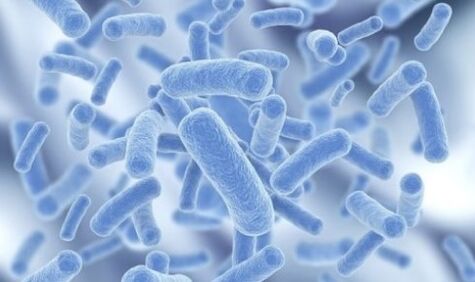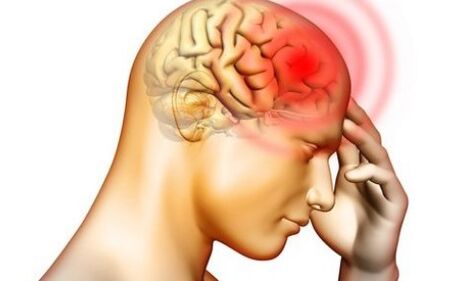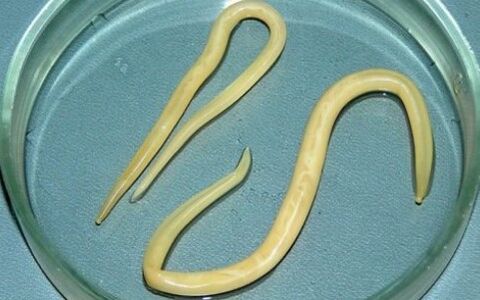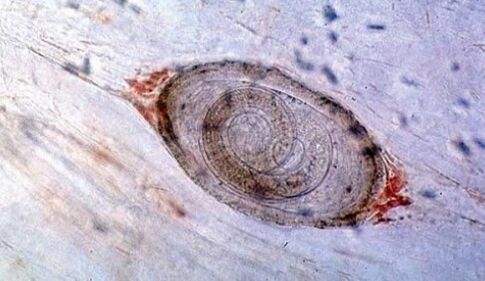Human parasites are called any organism that lives at its expense. These are bacteria, mushrooms, worms. Human parasites are divided into internal and exterior. The body is the least unpleasant and causes the body to destroy the Helmink - various parasitic worms.
Parasites and human body
The parasitizing beings of the human body can be external or internal. The exterior includes:
- Mosquitoes.
- Leeches.
- Lice.
- Microorganisms that cause cancer.
But there are many more creatures that tend to settle inside the body. They belong to:
- Bacteria.
- Properly.
- Helmints.
- Fungal.
The external and internal organization of the parasite is the simplest. Due to the fact that they do not need to improve for survival, their body is greatly simplified.
There are many creatures that prefer to settle inside the body. For example, there may be bacteria.
They can't survive without the host body and they can't get their own food. But each of them is almost without exception, very quickly, especially in the right conditions. Where they are not executed immediately.
They differ from each other from a territorial point of view. Some are found everywhere, and they have no climate. Others live exclusively in tropical countries, but they can easily be delivered to others in the human body. They also settle in different places in the body.

The cycles of the development of parasites, especially the helmints, are varied. Some first develop on the ground (biolemints) and then move into an living creature. Others must first develop in the body of any other creature, but not a person. Third, you can transfer it to another in adulthood or re -infect yourself.
It is wrong to assume that the infection can only occur with dirty hands. Some helmin eggs are viable for six months outside the nutrient medium and is perfectly clinging to animal wool. Eggs stay in a dangerous environment for them - it is worth cooking meat or fish incorrectly, as the whole of the worms can pay within you.
It's a good idea to cook the meat incorrectly, how to pay a whole worm in you.
Endoparasites of a person
Parasites are divided into endoparasites and ectoparasites. Endoparasites - those that settle inside, outside. Endoparasites can settle in almost all internal organs and body tissues. Depending on localization. Endoparasites are as follows:
- Connect to the external environment of endoparasites of internal organs.
They settled exactly in the organs that are related to the external environment, not the other way around: the parasite body is not chosen to "breathe". Such organs include the intestines, the light, the human urine system. These are amoebas, worms and burning parasites.
- Parasites.
Configured into human blood. They can live in plasma, white blood cells, red blood cells. These are tripanosomes, microfiliariae or haemosporidia.
- Fabric endoparasites.
Endoparasites that choose the tissues of the body with their place of residence. Muscle tissue, brain, cartilage, connecting. Even in the nerve fibers, tissue endoparasites can be organized. These are the striptease worm, the tripanosomes, the myxosporidia, the trichina and others.

Endoparasites can choose the brain with their place of residence.
Determining the variety of parasite at the site of localization is very conditional. Many species can migrate to various internal organs and travel regularly on the owner's body. The spread process can occur in one place and the organisms feed directly and in another. The place where the parasite is considered to be a place of reasonable localization.
Despite the simplification of many parasitic systems, their life cycle is quite complicated.
Due to survival, some varieties have to change more owners who can be linked to different biological species. Others can survive only one biological species, but it may require intermediate hosts. They multiply in one person, develop and grow up in the other. With such a complex life cycle, their sexual functions have increased significantly. In the parasites of the body, you need to multiply quickly and a lot.
Helmits
There are three main types of helmink, also known as worms. This:
- Threads, round worms.
- Cestodes, tape -shaped endoparasites.
- Trematodes, also known as saucers.
You can then distribute them to the life cycle and the number of places that they pass through this path. There are three types of:
Geo-Shelminths.
"GE" is the earth. These worms begin in the ground soil, but can only infect a person after the ripening phase. They do not need intermediate hosts, the eggs, together with the human stool, fall into the soil. The Larva stage is evolved exclusively in the warm season.
Such worms include Ascarides, Ugritsy bowel, non -core and Blazo heads.
The larvae of these parasites can enter the human body by unwashed vegetables or direct contact with the soil.
Biohelminths.
These are parasitic worms whose stages of life pass through several owners. Depending on the variety of worms, intermediate hosts can be two or more. Some parasites change only one person. Others, before finally entering the human body, are used by organisms of other biological creatures to develop.

It can be infected with pets or in contact with other people if you consume semi -meat. Biohelmine include bull tapworms, echinococcus, wide ribbon, trichina and others.
Contagioin helmits.
These worms do not need soil or medium owner. In an organization they hand over all stages of their life cycle and are very comfortable. The larvae stand directly from the human body when the household surfaces and other people are affected and spread freely.
Helminants can live in different organs and systems of the human body and regularly migrate from one side of the body to another.
The list of diseases caused by helmints is very extensive. Determine which parasites live in the body and what treatment can only be initiated after the analyzes needed to determine the type.
Round worms
In the human environment, there were the most widespread round worms, also known as nematodes. Overall, there are over 24, 000 types of yarns in the world.
They are framed because of their shape, which is detected when they make a transverse cut. The most common human nematodes:
- Askarids.
- Speakers.
- Peaworms.
- Blacovyv.
Known as Ascariasis, the Helmintes invasion begins with direct contact with soil -infected larvae or when using unwashed fruits and vegetables. The parasites begin to develop in the gut and then enter the circulatory system of a person from which they go to various internal organs, heading towards the oral cavity. A person who did not notice this swallows the adult parasite several times. They feed the remains of undigested foods. The waste of ascaris is extremely toxic. There is no vaccination from ascariasis, the infection can only be prevented by observing the rules of personal hygiene.
Pinworms infection is called Enterobiasis. They are small worms (5-10 mm), which is secured to the walls of the intestine. Nourish the blood and content of the intestine. Their eggs are placed under the skin and gets out of the anal opening from the outside while the owner is asleep. Itching causes a person combing anal region, the larvae fall under the skin and the hands can be easily moved in the house or in public places. Enterobiosis has no painful symptom, and the detection of Pinworms infection in the initial stage is extremely problematic.
Trichinella, they are Trichina, they are round worms that choose an animal or person with their master.

Trichinella is a parasitic worm that affects the human body and causes dangerous vermis disease in trichinellosis.
They begin to develop in the transverse muscles of the body and then redirect to the small intestine. Muscle tissue is advanced per kilogram with about 15, 000 Trichinella eggs. These parasites can cause a deadly disease called source - trichinellosis.
The round worms of the Blazovians are called because of their appearance. The first part of their body is a fiber, a esophagus.
The background is wider, with the remaining internal organs of the parasite. The length of the blazols can reach 50 mm. Blood and tissue fluid feed. It causes the disease of trichocephalosis.
Strip films
There are about 3, 500 famous striptease worm species in the world, the type of which is also called Cestodes. In these flat worms, there is no digestive system at all and the diseases they cause are called cestodosis.
The most common cestodossis:
Cystystyrkosis.
The disease of the larvae of the pork -tape worm is excited, inside the contaminated foods, from dirty hands.
The disease affects the skin, bones, internal organs, brain and spine. Parasites are most often sent to the brain (60% of the cases of infection). Diagnosed by rounded formations based on the appearance of the skin. The disease may be unfavorable when the central nervous system is infected.
Echinococcosis.
A májban, a tüdőben, a sok más belső szervben lokalizálva. Echinococcus larvae excite the disease. Több évig fejlődhetnek egy személyen belül.
A fertőzés az állatokkal való érintkezésben fordul elő, bogyók és gyümölcsök gyűjtése, szennyezett víz fogyasztása. A betegség nem túl észrevehető, évekig fejlődik, és csak véletlenül derül ki.
Alveococoscosis.
Az alveokokózist az alveocococcus férgek okozzák. A betegség hasonló az echinococcosishoz, de súlyosabb. Ez érinti a tüdőt és a veséket. A betegség kezelése nélkül nagy valószínűséggel lehet a végzetes eredmény a májelégtelenség kialakulásával kapcsolatban.
Toniarnchosis.
A tusiarinchosist egy bika lánc okozza. Parazitálja a szalagféreget a vékonybél területén, 2, 5-4 hónapig fejlődik. Az előrejelzések gyakrabban kedveznek a kezelésre. A paraziták bejuthatnak olyan személyekbe, akiknek fertőzött nyers vagy nem eléggé kezelt hőtalhúsja van.
A szalaghordók nagyon termékenyek. A leginkább csökkentették az érzékenység többi részét, és egyáltalán nincs emésztőrendszer. Az ilyen paraziták nem képesek fejlődni a tulajdonos nélkül.
Sosal munkavállalók
A Supreme a tremontodes. Ezek lapos férgek, a testének formájában, amely egy hosszúkás fa levélre emlékeztet.
Egyes típusú trematodok másfél métert érhetnek el.
És az emberi testben találják magukat, leggyakrabban halak vagy más tenger gyümölcsei révén vannak. About 7200 types of trematodes are known, 40 of them are sorted into humans and causes trematodoses, serious diseases caused by infection.
The most common Salars:
The liver bicom.
Globally, it can exist in animals and humans. The biological life cycle is complex, the parasite changes the owners.

Schistosoma.
Sistosome larvae can penetrate the skin or mucous membrane. The life cycle is complicated, nourished by blood. A female is able to produce about 3, 000 eggs per day, with a very high fertility of these parasitic worms.
Other liver balmers.
Opisthorchiasis, helmin disease, is primarily in the liver. The human body has a toxic effect.
The digestive system of worms is well developed, with IT-sexual and feces. The other systems develop poorly. Tremontodes are blood, epithelium cells and intestinal content. They can live almost anywhere: from the liver to the eyebrows.
Other types of endoparasites
The remaining internal parasites are various bacteria that cause dangerous diseases and the simplest microorganisms with them. The fungus, which is spreading inside the human body, also refers to the endoparasites.
There are many useful and harmful microorganisms in the human body. Some of them cause quite dangerous diseases that can lead to death. It is not always possible to recognize the presence of parasitic beings on its own, but early diagnosis of infection gives you more chances of healing. If you are suspected to have an invasion, we recommend that you complete a doctor's full examination.
- Fabric endoparasites.
- Parasites.
- Connect to the external environment of endoparasites of internal organs.
























